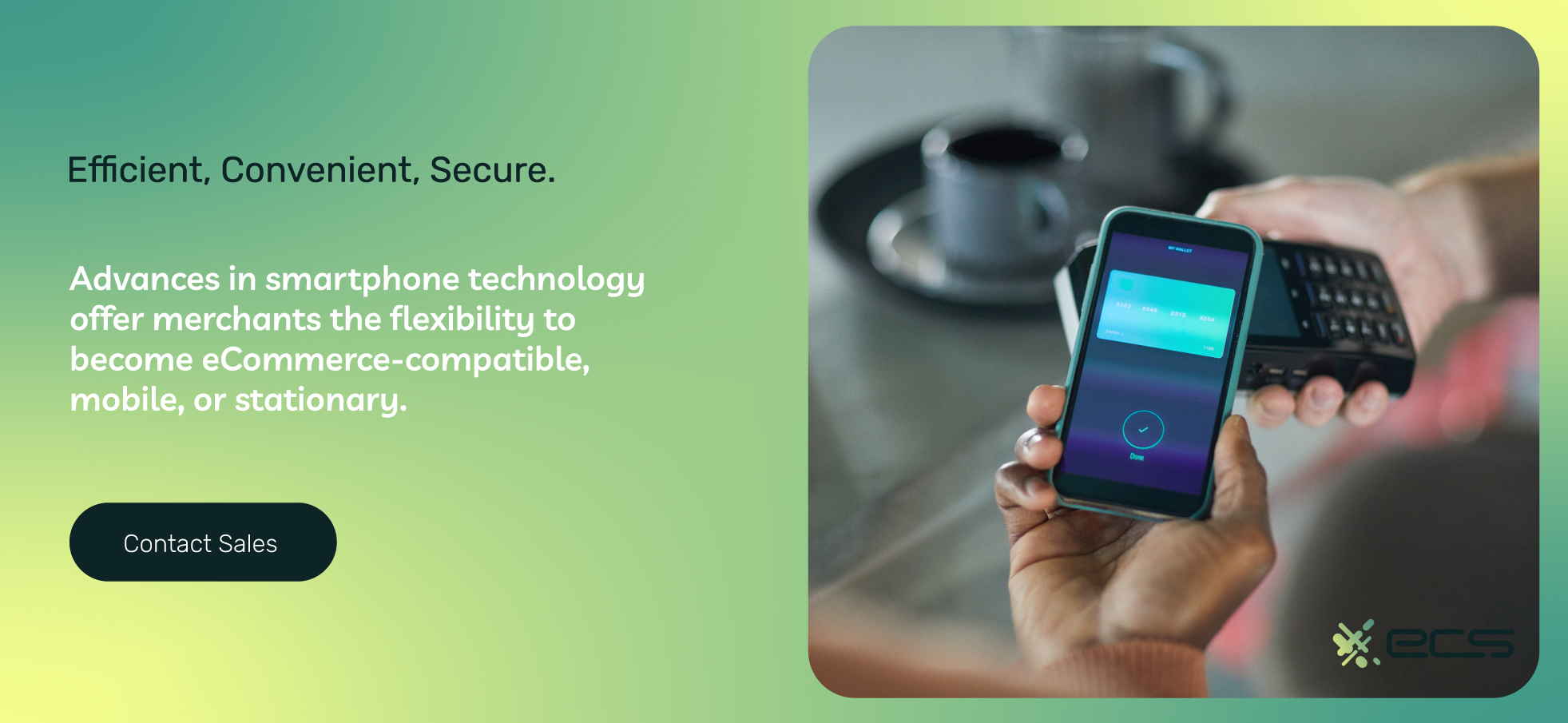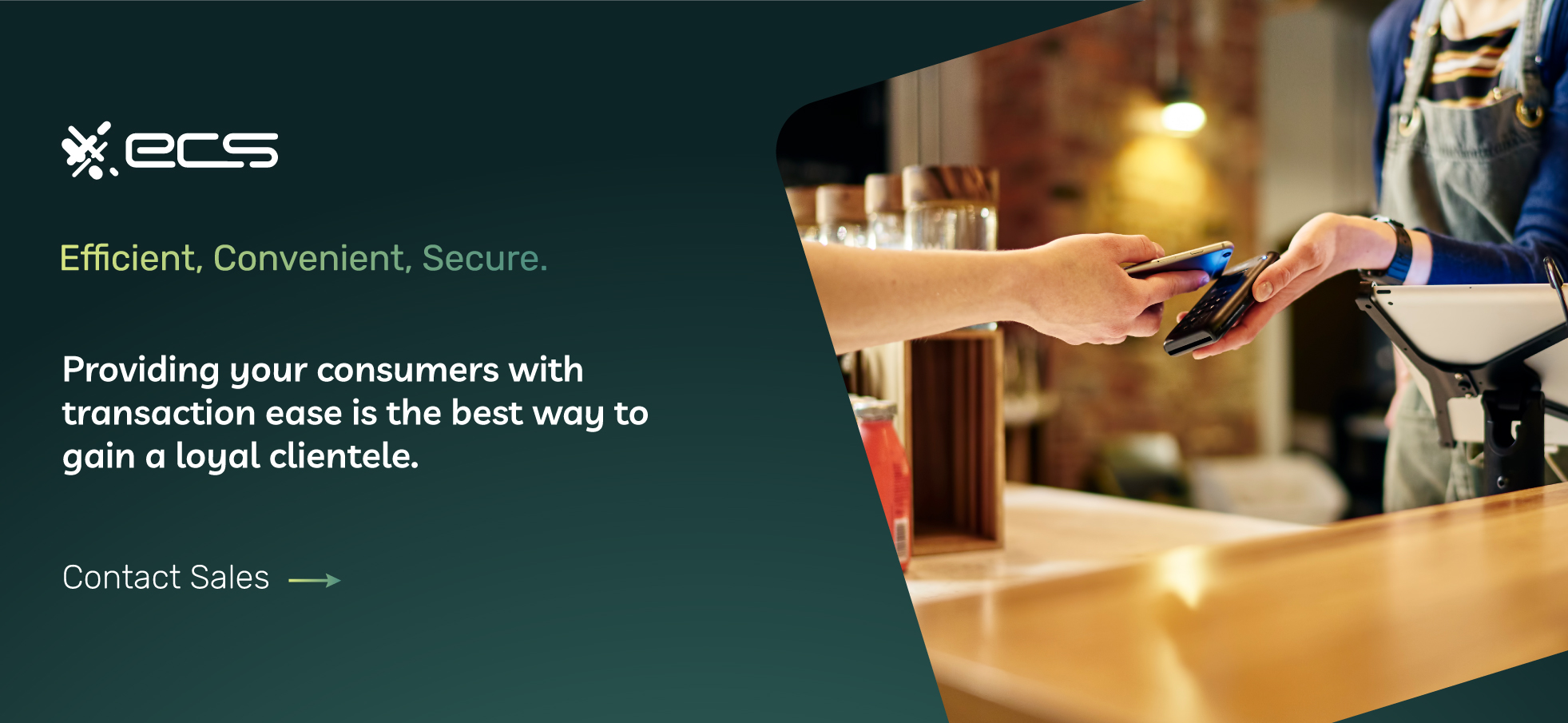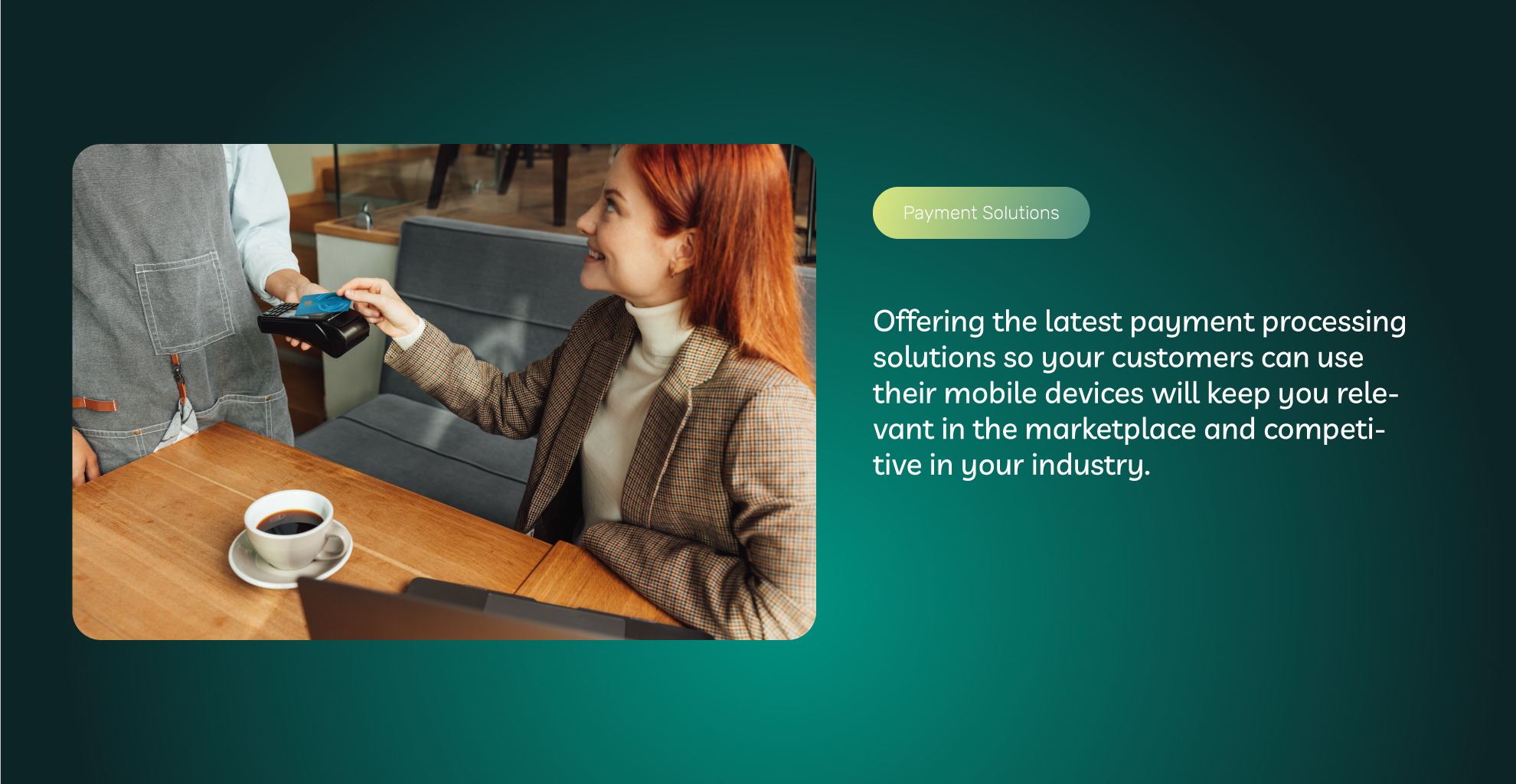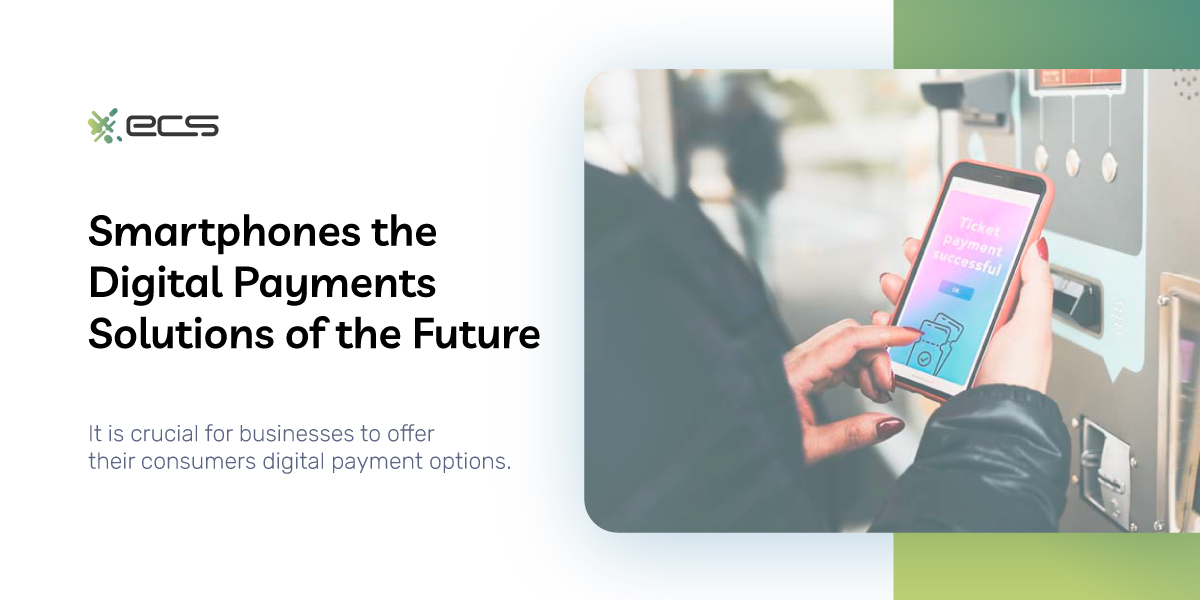Smartphones are the modern world’s digital jack-of-all-trades. These small devices facilitate phone calls, texting, e-mail, informational searches, telling time, taking photos, digital payments, and so much more.
It is crucial for businesses to offer their consumers digital payment options. Digital payments take on many forms. Many of which can all be completed with a smartphone.
The prosperity of a business is contingent upon a merchant’s ability to evolve with modern-day technology in payment processing. It is essential to adopt the different types of digital payments that are essential for consumer satisfaction.
What Are Digital Payments?
Digital payment technologies facilitate the transfer of money electronically. This can be done through credit or debit cards, mobile wallets, digital wallets, smartphone apps, or online payment platforms. Ultimately, digital payment methods are any form of transaction that does not use cash or check. Digital payments can be from peer to peer, consumer to business, or business to business.
What is a Digital Wallet?
A digital wallet, also known as an electronic or e-wallet, is a virtual program that provides cardholders the capability to perform bank transfers easily through users’ smartphones with a simple download.
These types of electronic payments cannot be done in stores for goods and services. Rather, two account holders would use digital wallets to transfer funds to each other. Digital payment companies are expected to run $1.152 trillion by the end of 2023 from peer to peer (p2p).
Popular Digital Wallet Apps
- Venmo
- Zelle
- Cash App
- PayPal
- Google Pay
What Are Contactless Payments?
Although contactless payments were already released years prior, it was the Covid-19 pandemic that helped them gain true popularity. Covid’s raised concern for health and safety peaked contactless interests. Contactless payments are one way to facilitate limited exposure and contamination risk.
Contactless payments are transactions that can be made via mobile wallets or NFC-enabled credit or debit cards. Ultimately, a contactless payment is a transaction where the consumer does not have to hand a cashier their cash or card to complete the purchase. Mobile phones and cards can simply be “tapped” on a reader.
Contactless payment readers and devices must be equipped with near-field communication (NFC) capabilities or radio frequency identification (RFID) technology. A small chip inside the device emits radio waves from a payment device to the payment reader at a short distance. NFC capability is recognizable on a contactless reader or card with a small icon that looks like a Wi-Fi symbol.

With the use of this technology, contactless cards or mobile wallets are simply waved or hovered over a card reader. In less than 2 seconds, the transaction is complete. Contactless payments are not only more hygienic than EMV and magstripe payments, but it is also quicker and more secure.
What is a Mobile Wallet?
A mobile wallet is a smartphone application that securely stores credit or debit card information. A Mobile wallet is used in lieu of a physical card, cash, or check to pay for goods and services. If a merchant accepts contactless transactions a mobile wallet can be used to pay.
Most smartphones come with mobile wallet apps already downloaded. Ideally, the user would simply need to locate the app on their device and enter in their card details. Now, with the simple wave of a user’s smartphone or watch, a contactless payment is complete.
Additionally, mobile wallets can manage photo IDs, licenses, loyalty program cards, boarding passes, and more. Popular mobile wallets are:
- Apple Pay for iPhone
- Google Pay for Android
- Samsung Pay Samsung
The brand of the smartphone would determine the mobile wallet used. Any mobile wallet seamlessly works with all issuing banks and card brands such as Visa, Mastercard, American Express, and Discover.
Digital Payment Trends
Consumers can pay for goods and services such as groceries, gas, utility bills, hospital bills, concert tickets, restaurant tabs, and much more all through their smartphones. Moreover, P2p payment has become increasingly popular using digital payment on smartphone apps to transfer funds.
To demonstrate, Mastercard and Visa have both reported that after 2020, over 50% of cardholders prefer to use contactless payment over traditional methods. Furthermore, American Express and Discover are now only issuing contactless compatible replacement cards. Soon enough, all card issuers will replace cards with contactless features.
Mobile Point of Sale
Mobile-point-of-sale (mPOS) is trending in digital payment technology. Evidently, a recent study gave insight that mPOS will have a compound annual growth rate (CAGR) of approximately 19% between 2020 and 2026.
Mobile payment solutions are revolutionizing merchants in the marketplace. In adding these platforms, merchants liberate themselves from stationary card terminals and POS devices.
Because of this, checkout has become more streamlined. Customers now have a more flexible way to pay from anywhere in the store. Mobile POS devices have replaced centralized checkout counters with mobile sales staff, ready to accept payments anywhere, at any time.
Moreover, with mPOS, merchants are freed from their physical brick-and-mortar locations. They can run their business from anywhere like trade shows, concerts, sports games, food trucks, farmer’s markets, and more. Mobile POS can really help small businesses accept credit cards from anywhere.
Digital Assistant Payments
Smartphone voice-activated digital assistants like Siri and Google have really made life feel more luxurious. These personal digital assistants have evolved ever further into smart home devices or smart speakers. Manufacturers have created devices like Amazon’s Alexa, Google Home, and Apple’s Siri in portable speaker form.
Users give voice commands to complete an action or receive spoken information from these devices. These tasks include asking about today’s weather, getting an update on traffic, and googling unknown information. In addition, users can ask their smart speakers to buy products or services with simply their voice. Payment information is stored digitally and the machine does the rest.
According to recent statistics, 35% of smart speaker owners use the device for buying goods like groceries, clothing, and home care products. Additionally, 28% of the surveyed use smart speakers for making direct payments or transferring money from p2p.


Digital Payment Technologies
There is a digital transformation of payments occurring at a rapid rate. To complete successful digital transactions, different engineered technologies are in play.
Artificial Intelligence
Machine learning, an interdisciplinary sector of artificial intelligence has helped advance the security and experience for digital payments. With consumers using mobile and digital wallets to complete more purchases, AI studies and improves these experiences over time.
Furthermore, with AI, digital payments have become more secure. Payment solutions go to greater lengths to ensure fraud protection. For example, digital wallets provide 2-step verification and security questions if a payment seems unfamiliar. Mobile wallets require face ID or Touch ID to open.
NFC and RFID Technology
Contactless digital payments require near-field communication (NFC) or radio frequency identification (RFID). NFC and RFID-enabled cards and devices allow for contactless communication between payment devices. Additionally, smartphones, tablets, watches, and updated NFC-enabled cards safely store card information. Each digital transaction creates a one-time token, securing sensitive information.
Digital Payment Gateways and APIs
Virtual payment gateways can accept digital payments online. Mobile wallets automatically input stored card information in the card detail fields from a user’s mobile device. From there, the gateway will securely send payment information. Evidently, this enables merchants to accept online payments or become a fully eCommerce operation.
Biometric Verification
Biometric verification is how a device uniquely identifies a user. It evaluates distinguishing biological features and structures such as facial recognition, fingerprints, iris recognition, and voice recognition.
Smartphones and mobile apps use biometric verification to authenticate digital transactions. For example, mobile wallets on iPhones use a face scan to pay for goods at the store. Additionally, the app store uses fingerprints or facial recognition to complete all purchases.
Biometric information is used in many ways. In the financial service industry, it has incorporated measures to ensure fraud protection and secure authentic transactions.
Tech-Savvy Generations Driving Digital Payments
Digital payments will continue to dominate the payment industry in the years to come. Naturally, the increasingly tech-savvy generations will ultimately drive the continued advances in digital payment solutions. Gen Z, Millennials, and Gen Alpha are steering the direction of the world’s market and economic advances.
As the younger generations become more technologically advanced, the demand for cutting-edge digital payment solutions will continue to increase. A cashless society is quickly approaching. Soon enough, the only means of payment will be by way of digital currency.

Why Your Business Should Accept Digital Payments
With technology always evolving and Covid-19 safety procedures in place, digital payments are the best way to alleviate your customers’ concerns. In fact, providing revolutionary digital payment platforms will help you become a competitive merchant in your industry.
Consumers are looking for the safest and most convenient way to shop. Contactless and digital payment options provide increased hygiene, transactional ease, and security.
Furthermore, younger generations are adopting digital payments at a rapid pace. If you want your business to stay relevant and keep up with the times, you must also adopt modern digital payment solutions.
Safety and Security
Digital payments primarily use contactless features. When utilizing these solutions, parties are not transferring sensitive payment information back and forth.
Information is transferred electronically with no need for human interference. Each individual transaction creates a one-time tokenized code. As a result, cardholder information is secure.
Convenience
Most consumers avoid stores that do not accept their go-to method of payment. Convenience drives most decisions. In today’s world, we rarely leave home without our smartphones. Therefore, the most convenient payment option would be with our mobile wallets.
Merchants offering digital payment coupled with mobile wallet acceptance will surely be set apart. Providing your consumers with transaction ease is the best way to gain a loyal clientele.
Speed
Digital payments offer speed unparalleled to standard payments. In less than 2 seconds, an NFC transaction is complete. Quick checkout reduces lines and wait times for customers. Reduced wait time generates quicker turnover, happier customers, and higher profits.
Digital Payment Adoption for Merchants
Smartphone technology and tech-savvy generations are driving the need to adopt smartphone payment solutions. However, consumers can only increase their use of contactless and mobile payments if merchants equip themselves to accept these forms of payment.
Merchants who utilize the latest smart technology will optimize their sales. Smartphones can complete digital payments with their mobile wallet and contactless credit card readers. Smartphones can also complete an electronic transaction with a secure online gateway. Merchants must work with a digital payment processing company that offers electronic payment platforms and the latest terminal technology.
Consequently, advances in smartphone technology offer the flexibility for merchants to become eCommerce compatible, mobile, or stationary. All three avenues for business can utilize any electronic processing service to meet their needs. ECS provides our merchants with innovative payment technology. Making it easy to offer mobile payment options to their valued consumers.
Digital Payments Conclusion
In brief, digital payments are constantly evolving. Smartphones can pretty much handle any digital payment transaction. Whether an online order, QR code scan, mobile wallet, or digital wallet money transfer, smartphones have your customers covered.
Ultimately, smartphones can handle it all. Because of this, it is important for a business to stay up to date with modern technology. Offering the latest payment processing solutions so your customers can use their mobile devices will keep you relevant in the marketplace.
Frequently Asked Questions About Smartphone Mobile Wallets
Mobile wallets store digital versions of credit or debit cards. Cardholders can use mobile wallets to pay for merchant goods and services.
Conversely, mobile payment apps like Venmo, Paypal, and CashApp are social payment services for peer-to-peer payments linked directly to a cardholder’s bank account. Generally speaking, most legitimate merchants do not take payments from a social payment app.
Smartphone mobile wallet payments are more secure, convenient, and quicker than traditional payment methods. These benefit merchants with less fraud, fewer chargebacks, quicker lines, and more loyal and happy customers.
To encourage customers to use their smartphones for payments, you can hang signage or use stickers near the terminal to market the payment option and educate your employees on how to offer mobile wallet options to customers at checkout.
Credit card processing fees depend on the type of contract you are on. If you use a flat-rate payment processor like Stripe or Square, you will be paying the same percentage regardless of the type of transaction.
However, merchants on an interchange plus pricing plan and accepting smartphone mobile wallet payments will pay the same credit card processing fees as they would with a contactless payment.
These transactions will benefit the merchant as swiping, keying, or inserting a chip may cost the merchant more in interchange rates. However, the kind of credit card also plays a role in the interchange costs.
Updated January 2024
